What The Last Five Years Can Teach Zelda WiiU/NX
Posted on May 14 2016 by Jon Lett

My, that’s a lackluster game name, isn’t it? E3 cannot come fast enough, so that we can finally learn the actual title of “The Legend of Zelda: Forever Delayed” (Thanks to KittyKyomi for the rather appropriate pending title). But until then, and until it finally releases on both systems in March 2017 (or maybe even later – who even knows at this point?), there is a lot to think about. Eight Zelda games – EIGHT – have been release since they began programming this monolith of a game back in 2011, so in that time, they have likely learned a few things. Whether it was a brand new title, a remake, or a spin-off, there is a lot to see when it comes to fans’ reactions to new releases. Trying new things and correcting old mistakes has naturally taught Nintendo a lot, but what can we expect them to implement into their new title? What lessons have they learned, and what elements of recent releases have effected the development of Zelda Wii U/NX?
And of course, no rumour talk here. Only my own theories. Make sure to join in the discussion, and let us know your own theories in the comments!
For reference, here is a list of the Zelda games that have come out since the beginning of the development cycle back in 2011, in order of release:
I highly recommend watching Commonwealth Realm and FerrisWheelProduction‘s old video, “Zelda Wii U – History, Timeline and Development”, to gain a better understanding of all the steps Nintendo went through in Zelda Wii U/NX’s development up to the end of 2015, as well as what they predicted would come after.
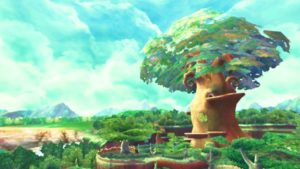 Nintendo made clear that their development of the game began shortly before the release of Skyward Sword, so we can naturally assume that they were expecting to learn some things from the following fan reception. Praise was certainly high when it came to the reviews overall, but not even they could deny the rather prominent fan outcry. The new motion controls, as well as the extreme linearity, as opposed to past titles’ sense of exploration, threw longtime fans for a loop, and made many of them question what the future of the series would bring if the habits of this new Wii title continued. Nintendo noticed this, and realized that, for some time, the series was becoming seriously linear, and while it may have been okay for awhile, people clearly wanted more of an open world experience. That is quite obviously the case with this game, but a more subtle effect Skyward Sword had was due to the motion controls. Innovation is all well and great, but it seems that motion controls were too big of a change for the fandom to accept as a whole, and now it looks like no new Zelda’s will implement it.
Nintendo made clear that their development of the game began shortly before the release of Skyward Sword, so we can naturally assume that they were expecting to learn some things from the following fan reception. Praise was certainly high when it came to the reviews overall, but not even they could deny the rather prominent fan outcry. The new motion controls, as well as the extreme linearity, as opposed to past titles’ sense of exploration, threw longtime fans for a loop, and made many of them question what the future of the series would bring if the habits of this new Wii title continued. Nintendo noticed this, and realized that, for some time, the series was becoming seriously linear, and while it may have been okay for awhile, people clearly wanted more of an open world experience. That is quite obviously the case with this game, but a more subtle effect Skyward Sword had was due to the motion controls. Innovation is all well and great, but it seems that motion controls were too big of a change for the fandom to accept as a whole, and now it looks like no new Zelda’s will implement it.
Something from the Wii exclusive I think could definitely make it into Zelda Wii U (yes I’m still calling it that) is the level of creativity in art styles. Before Skyward Sword, The Wind Waker was the last Zelda game to present us with an original, non-realistic art style; Twilight Princess opted for a realistic setting, so there was less creative impact graphically. Any other games after The Wind Waker used visual styles and model designs similar to those of the Gamecube classic. Skyward Sword, in a time when new, impressive games were commonly using realistic visuals, took the chance of having a stylistic look instead, and it was quite a sight to behold, proving that Nintendo’s usual distance from graphical trends still held up. I think that Zelda Wii U will have similar impact, especially in HD, and will once again knock our socks off with visuals that we never knew we wanted.
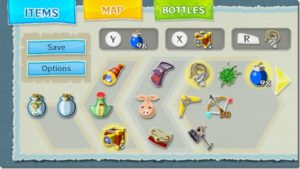 On the note of The Wind Waker, its HD remake certainly opened my eyes to a few things that I think should stay with the series for the foreseeable future. We already know that the beloved Magic Meter of old – last seen in The Wind Waker – is returning, but there are many uncertainties. The most obvious one is the controls. I still think that classic button mashing, as opposed to something like motion controls, is the way to go for almost any Zelda title, but this game proved that Zelda is the series where the gamepad truly shines. It is perfect. Maps, items, logs and everything else being mapped to the touch screen is exactly the way Zelda should play, in my eyes. And let’s not forget gyroscope aiming. Zelda Wii U is set to have the same type of controls, so the question is how much will be done similar to past titles, and what new features will be added. Alongside the updated controls, there were certain minor optimizations of things that got on people’s nerves in the past. Faster raising sunken treasure, more holdable pictographs, immediate Hero Mode availability, faster grappling – small fixes and additions like these are likely ones Nintendo will think of when making the new Zelda, and they will be reminded of the types of things that bother players, and that they must be diligent in making certain elements of the game properly efficient to execute. Finally, the fact that The Wind Waker was an open-ended experience means that they likely looked to it for influence. Admittedly, I imagine that they saw more of what NOT to do in the new game, like the obnoxiously long expanses, but that just means there are things they will keep in mind along the way. Eventually gaining additional travelling aids, like the Swift Sail, and having more fast-travel points than in The Wind Waker HD are the kinds of choices that I hope they have enough sense to make. And, as a side note, the graphics once again proved that with modern HD visuals, even graphical styles that were previously criticized can be made gorgeous in the eyes of most fans.
On the note of The Wind Waker, its HD remake certainly opened my eyes to a few things that I think should stay with the series for the foreseeable future. We already know that the beloved Magic Meter of old – last seen in The Wind Waker – is returning, but there are many uncertainties. The most obvious one is the controls. I still think that classic button mashing, as opposed to something like motion controls, is the way to go for almost any Zelda title, but this game proved that Zelda is the series where the gamepad truly shines. It is perfect. Maps, items, logs and everything else being mapped to the touch screen is exactly the way Zelda should play, in my eyes. And let’s not forget gyroscope aiming. Zelda Wii U is set to have the same type of controls, so the question is how much will be done similar to past titles, and what new features will be added. Alongside the updated controls, there were certain minor optimizations of things that got on people’s nerves in the past. Faster raising sunken treasure, more holdable pictographs, immediate Hero Mode availability, faster grappling – small fixes and additions like these are likely ones Nintendo will think of when making the new Zelda, and they will be reminded of the types of things that bother players, and that they must be diligent in making certain elements of the game properly efficient to execute. Finally, the fact that The Wind Waker was an open-ended experience means that they likely looked to it for influence. Admittedly, I imagine that they saw more of what NOT to do in the new game, like the obnoxiously long expanses, but that just means there are things they will keep in mind along the way. Eventually gaining additional travelling aids, like the Swift Sail, and having more fast-travel points than in The Wind Waker HD are the kinds of choices that I hope they have enough sense to make. And, as a side note, the graphics once again proved that with modern HD visuals, even graphical styles that were previously criticized can be made gorgeous in the eyes of most fans.
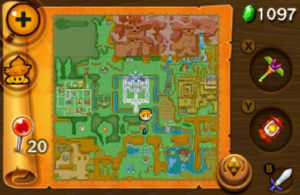 A Link Between Worlds presented the first truly non-linear Zelda title in a very long time, so obviously, this is one game that will be very important for Nintendo to keep in mind – especially since people liked it so much. Dungeon locating and exploration, plot progression, and even item collection were all tailored to properly fit this new open-ended Hyrule adventure, and it worked amazingly. Nintendo would be foolish not to see this game as a major example of how to make a good open-world game. That being said, I still think that Zelda Wii U will be notably different in certain aspects. I can imagine that, with such a huge open world, we could very likely be restricted in some manner, disallowing us from exploring absolutely everything right off the bat. I think that we will be able to traverse most areas as we wish, fighting off monsters and exploring freely, but the major difference is likely to be items, and how you obtain them. I can imagine us being able to get items in any order we want, like before, but instead of buying them, we will need to complete quests and dungeons to find them. These quests and dungeons would be readily available, or could be few at first, and then several could open up at once when you beat the first one(s). I feel like this would be a better system than buying the items, as it adds some logical challenge, and removes the need to search for more money.
A Link Between Worlds presented the first truly non-linear Zelda title in a very long time, so obviously, this is one game that will be very important for Nintendo to keep in mind – especially since people liked it so much. Dungeon locating and exploration, plot progression, and even item collection were all tailored to properly fit this new open-ended Hyrule adventure, and it worked amazingly. Nintendo would be foolish not to see this game as a major example of how to make a good open-world game. That being said, I still think that Zelda Wii U will be notably different in certain aspects. I can imagine that, with such a huge open world, we could very likely be restricted in some manner, disallowing us from exploring absolutely everything right off the bat. I think that we will be able to traverse most areas as we wish, fighting off monsters and exploring freely, but the major difference is likely to be items, and how you obtain them. I can imagine us being able to get items in any order we want, like before, but instead of buying them, we will need to complete quests and dungeons to find them. These quests and dungeons would be readily available, or could be few at first, and then several could open up at once when you beat the first one(s). I feel like this would be a better system than buying the items, as it adds some logical challenge, and removes the need to search for more money.
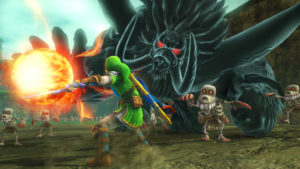 Hyrule Warriors is an odd little outlier here, as the Zelda development team was not a huge part of it. Being a third-party spin-off and all, it is less likely to be seen as a point of inspiration for the new game, but still, there are some things they can, and likely should, take from this popular spin-off. There are some little things, like the way certain instances of atmosphere were achieved in battle, and the ways that 2D elements were recreated in 3D quite differently than ever before, but there are some more important elements to consider. Hyrule Warriors presented us with not only loads of playable characters other than Link, but also a totally different type of gameplay. Sure, it was the Dynasty Warriors style of play, but the use of large and varied combos is perhaps something that Zelda could take from. As for the multiple playable characters, I hope that there are times in this new Zelda, or some future one, where Link is absent, or maybe captured, and someone else in the game would have to take over the fight for awhile (hopefully Zelda). It would be a pleasant change of pace, and some new gameplay styles could be explored.
Hyrule Warriors is an odd little outlier here, as the Zelda development team was not a huge part of it. Being a third-party spin-off and all, it is less likely to be seen as a point of inspiration for the new game, but still, there are some things they can, and likely should, take from this popular spin-off. There are some little things, like the way certain instances of atmosphere were achieved in battle, and the ways that 2D elements were recreated in 3D quite differently than ever before, but there are some more important elements to consider. Hyrule Warriors presented us with not only loads of playable characters other than Link, but also a totally different type of gameplay. Sure, it was the Dynasty Warriors style of play, but the use of large and varied combos is perhaps something that Zelda could take from. As for the multiple playable characters, I hope that there are times in this new Zelda, or some future one, where Link is absent, or maybe captured, and someone else in the game would have to take over the fight for awhile (hopefully Zelda). It would be a pleasant change of pace, and some new gameplay styles could be explored.
Now, the part of this game I think is most likely to be taken from is the act of fighting bosses out in the open. In the past, Zelda’s bosses have been fought pretty much exclusively indoors, or at least in a confined area that is made to look wide open. In this upcoming game, perhaps some of the dungeon monsters will be fought outdoors after you finish a dungeon, leaving you to fight them in an open field or some such environment. After first hearing of The Elder Scrolls V: Skyrim‘s dragon fights out in the open world, I have seriously wanted some of this in Zelda, so I sure hope there are some like Hyrule Warriors‘ final Ganon fight, which I see as a great example of this, and its best battle overall. Considering the massive Beamos-like creature in the first Zelda Wii U trailer, I think there is a good chance I could get my wish.
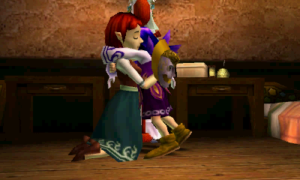 Moving back to main-series titles, Majora’s Mask 3D brought about some long-lost gameplay elements that a lot of fans were fond of, and, as with any remake, improved most of them (RIP Zora swimming). The time system was made as great as it could, and the sidequests were fun as ever, but I don’t think that Majora’s Mask is something this new game is going to take from very much, as it remains a sort of outlier in the series. The time system, I would hope, could teach them the value of manually changing the time of day, and perhaps the sidequests, and the characters they involve, could influence the level of detail that goes into Zelda Wii U’s characters, the schedules they follow, and the minor effects they have on the world around them. Unfortunately, I feel as though most of the other games will have more influence.
Moving back to main-series titles, Majora’s Mask 3D brought about some long-lost gameplay elements that a lot of fans were fond of, and, as with any remake, improved most of them (RIP Zora swimming). The time system was made as great as it could, and the sidequests were fun as ever, but I don’t think that Majora’s Mask is something this new game is going to take from very much, as it remains a sort of outlier in the series. The time system, I would hope, could teach them the value of manually changing the time of day, and perhaps the sidequests, and the characters they involve, could influence the level of detail that goes into Zelda Wii U’s characters, the schedules they follow, and the minor effects they have on the world around them. Unfortunately, I feel as though most of the other games will have more influence.
 Tri Force Heroes… well, there is not much to say here. This rather lackluster party game was never meant to be a template for more main-series games, and this new Zelda will rather likely not have an online features aside from some sort of little message or item sharing system, so the multiplayer aspect is of no consequence. Now, you may remember back in January 2013, where, in a Nintendo Direct, Eiji Aonuma talked about how Zelda Wii U would “change the conventions of Zelda”. He said this referred to the ideas of completing dungeons in order, and playing by yourself. I truly feel like this new game will still have a single-player focus, but the idea of playing by yourself could be somehow challenged by playing with the idea of in-game partners, and how they participate in the adventure, rather than introducing any sort of major online multiplayer system. As such, again, I think that Tri Force Heroes will not act as a template for any sort of gameplay for Zelda Wii U. That being said, the next big HD remake that came along made up for this, as it is likely a very large point of reference for Zelda Wii U.
Tri Force Heroes… well, there is not much to say here. This rather lackluster party game was never meant to be a template for more main-series games, and this new Zelda will rather likely not have an online features aside from some sort of little message or item sharing system, so the multiplayer aspect is of no consequence. Now, you may remember back in January 2013, where, in a Nintendo Direct, Eiji Aonuma talked about how Zelda Wii U would “change the conventions of Zelda”. He said this referred to the ideas of completing dungeons in order, and playing by yourself. I truly feel like this new game will still have a single-player focus, but the idea of playing by yourself could be somehow challenged by playing with the idea of in-game partners, and how they participate in the adventure, rather than introducing any sort of major online multiplayer system. As such, again, I think that Tri Force Heroes will not act as a template for any sort of gameplay for Zelda Wii U. That being said, the next big HD remake that came along made up for this, as it is likely a very large point of reference for Zelda Wii U.
 It is no secret that Twilight Princess HD was an extremely important point in Zelda Wii U’s development. Eiji Aonuma has gone on record to say that Twilight Princess was something of a “starting point” for the game’s creation, and that many things he has done in its development “are things [he] thought of while making Twilight Princess“. This could mean any number of things, but one major aspect I think Twilight Princess stood out for, and excelled at, was combat. The addition of the Hidden Skills, horseback swordplay, and slashing while moving indicate that combat is something that must evolve over time in the series, and in looking back at this game, I believe that the developers took inspiration from it when designing the interesting new horseback, bullet-time combat techniques, and whatever other new combat elements that we’ll see in Zelda Wii U. After all, basic sword-slashes only get you so far these days. Something else smaller to consider is the fact that Aonuma noticed certain “mistakes” he made on the game 10 years ago, and ultimately learned from and changed them in the HD remake.
It is no secret that Twilight Princess HD was an extremely important point in Zelda Wii U’s development. Eiji Aonuma has gone on record to say that Twilight Princess was something of a “starting point” for the game’s creation, and that many things he has done in its development “are things [he] thought of while making Twilight Princess“. This could mean any number of things, but one major aspect I think Twilight Princess stood out for, and excelled at, was combat. The addition of the Hidden Skills, horseback swordplay, and slashing while moving indicate that combat is something that must evolve over time in the series, and in looking back at this game, I believe that the developers took inspiration from it when designing the interesting new horseback, bullet-time combat techniques, and whatever other new combat elements that we’ll see in Zelda Wii U. After all, basic sword-slashes only get you so far these days. Something else smaller to consider is the fact that Aonuma noticed certain “mistakes” he made on the game 10 years ago, and ultimately learned from and changed them in the HD remake.
“To be honest, when I played it again, I wondered why some things turned out the way they did, and I also discovered some negative things that I didn’t notice at the time. I got quite down about it.” – Eiji Aonuma
Like with The Wind Waker HD, certain aspects were tweaked primarily for convenience. Number of Tears of Light, movement on Epona (even if it IS awful now), a new starting size for your wallet – mostly time savers and movement optimization. But a big one is the initial option for Hero mode. Zelda has, for a long time, been rather easy, especially for long-time fans, so finally being able to choose the more challenging option – with no hearts, a mirrored world, and double damage, no less – was a refreshing change. If nothing else, maybe this will show Nintendo that that level of extra challenge is a good thing, and the new Zelda will be tougher than usual.
 And finally, Hyrule Warriors Legends, a game that caused QUITE the uproar with the one major addition that I think may just affect Zelda Wii U: Linkle. There was a serious bout of hate going around after Linkle was first revealed – particularly from rather extreme feminist groups – but at this point, I think that most of the fans have gotten past any reservations about her, seeing her as a fresh addition to the series that certainly does not break any sort of social rules as many claimed she did. She is an indication that playing as somewhat of a “female Link” (even if she is, in fact, her own character) is a welcome option for players. Now, unfortunately, I am having trouble believing that Nintendo is going to have options for a female Link, or even a separate female character. Yes, there are rumours going around about “confirmations” of such options, but since Nintendo has said no such thing, I cannot accept it as any sort of truth. The fact is, Nintendo has had the same beloved protagonist for the past 30 years, and while another would be great, they are quite… conservative with their classic material, and often times, I’d go as far as to call them rather closed-minded. That is not to say they are outright against the idea of having these options, but I can imagine they are hesitant to have a Zelda title not featuring Link specifically as he has always been. I could be wrong, and E3 could prove that, but I have a feeling the same old male Link will still be the solo hero here, as the trailers and new artwork seem to depict.
And finally, Hyrule Warriors Legends, a game that caused QUITE the uproar with the one major addition that I think may just affect Zelda Wii U: Linkle. There was a serious bout of hate going around after Linkle was first revealed – particularly from rather extreme feminist groups – but at this point, I think that most of the fans have gotten past any reservations about her, seeing her as a fresh addition to the series that certainly does not break any sort of social rules as many claimed she did. She is an indication that playing as somewhat of a “female Link” (even if she is, in fact, her own character) is a welcome option for players. Now, unfortunately, I am having trouble believing that Nintendo is going to have options for a female Link, or even a separate female character. Yes, there are rumours going around about “confirmations” of such options, but since Nintendo has said no such thing, I cannot accept it as any sort of truth. The fact is, Nintendo has had the same beloved protagonist for the past 30 years, and while another would be great, they are quite… conservative with their classic material, and often times, I’d go as far as to call them rather closed-minded. That is not to say they are outright against the idea of having these options, but I can imagine they are hesitant to have a Zelda title not featuring Link specifically as he has always been. I could be wrong, and E3 could prove that, but I have a feeling the same old male Link will still be the solo hero here, as the trailers and new artwork seem to depict.
It’s been a long five years of development, and these eight titles have certainly presented a lot of points of reference for what fans have and haven’t liked. Nintendo it almost, if not completely done with the development of this monster of a game, and honestly, I am incredibly hyped to learn more about it. While I must choke back my disdain for it being their only thing at E3, I am at least quite excited to finally get some real news. When we finally get to see some trailers and such at the expo, I sure do hope to see some of these things make their way into the game. I suspect Nintendo has learned a lot, and that while new game elements are great, there are certain classic aspects that ought to be kept. Let’s see how much I predicted when the time comes around.
As usual, we love hearing from you guys, so drop some comments below about what you think each game will have taught the Zelda Wii U/NX development team, and get HYPED for this Junes, because this game is going to demolish fans with news left right and center!




